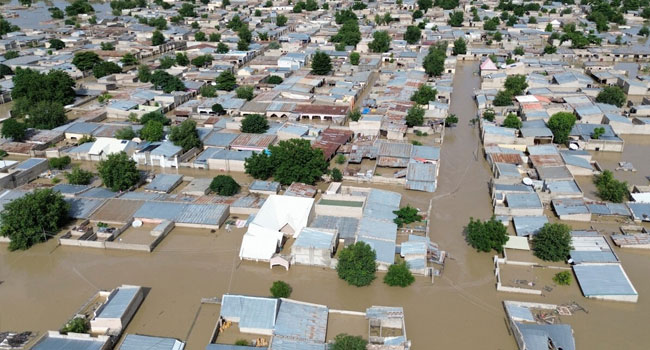FG warns 30 states, FCT of heavy rains and floods.
The federal government has predicted heavy rainfall and flooding in 30 states, as well as the Federal Capital Territory (FCT), Abuja.
Abia, Adamawa, Akwa Ibom, Anambra, Bauchi, Bayelsa, Benue, Borno, Cross River, Delta, Ebonyi, Edo, Gombe, Imo, Jigawa, Kebbi, Kogi, Kwara, Lagos, Nasarawa, Niger, Ogun, Ondo, Osun, Oyo, Rivers, Sokoto, Taraba, Yobe, Zamfara, and the Federal Capital Territory.
Joseph Utsev, Minister of Water Resources and Sanitation, stated on Thursday that coastal and riverine flooding might occur in some regions of the country’s South-South geopolitical zone as sea levels rise.
These states include Bayelsa, Cross River, Delta, and Rivers, while Akwa-Ibom and Edo are high-flood-risk.
Utsev made the statement during the Nigeria Hydrological Services Agency (NIHSA)’s public presentation of the 2025 Annual Flood Outlook in Abuja.
The 2025 Annual Flood Outlook (AFO) was divided into three sections to address the current issues of flood disasters and provide information for mitigation, particularly in the most susceptible populations.
The minister revealed that flooding remained one of Nigeria’s most catastrophic natural disasters, with climate change increasing its frequency and intensity. He disclosed that 1,249 villages in 176 local government areas (LGAs) in 30 states and the FCT are in high-risk flood zones this year, with another 2,187 communities in 293 LGAs facing moderate flood risks. Key danger areas include Abia, Benue, Lagos, Bayelsa, Rivers, and Jigawa, among others.
To strengthen early warning and response systems, this year’s AFO featured a community-based flood forecasting approach. Rather than make general projections, forecasts are now personalised for specific communities, improving grassroots communication and preparedness.
Richard Pheelangwah, Permanent Secretary of the Ministry of Water Resources and Sanitation, asked stakeholders to emphasise early responses. “This outlook isn’t just about numbers; it’s about protecting lives and livelihoods,” he stated.
Umar Mohammed, Director General of NIHSA, stated that this year’s flood forecast goes beyond mapping LGAs to identify specific areas in danger.
“Our focus has expanded to assess sectoral impacts on health, education, agriculture, and infrastructure, offering more robust tools to policymakers and disaster risk managers,” he told me.




